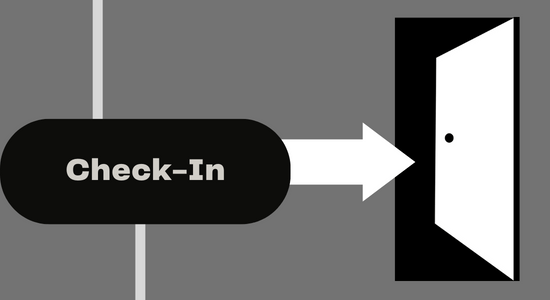Life can often feel chaotic and aimless without a clear plan. You might find yourself working hard but not making any real progress towards your goals. So you often feel frustrated and demotivated - then have you ever considered success mapping? It’s a practical method to help you visualize your goals, break them down into manageable tasks, and create a visual plan of action.
Organize your thoughts and create a concrete plan, and then you’ll set yourself up for success, which means you’ll be much more focused and purposeful in whatever you do. Ready to get started? Let's dive in!

Did You Know?
- Goal Setting Increases Success Rates: Studies show that setting specific and challenging goals can lead to higher performance 90% of the time (Locke & Latham, 2002).
- Visualization and Success: Visualizing goal achievement can improve success rates by up to 33% (Taylor, Pham, Rivkin, & Armor, 1998).
- Accountability Partners Improve Achievement Rates: Having an accountability partner increases the probability of reaching a goal by up to 65% (American Society of Training and Development).
- Regular Progress Reviews Enhance Outcome: Regularly reviewing goals and progress can improve outcome achievement by over 95% (Dominican University of California).
- Written Goals Are More Effective: People who write down their goals are 42% more likely to achieve them (Dr. Gail Matthews, Dominican University).
What Is Success Mapping?
Success mapping is a technique used for planning and achieving your goals. It's a visual tool that helps you outline your goals, the tasks you need to do, and the steps you need to take to achieve those goals. By laying everything out in a clear and organized manner, you can see the entire path from where you are now to where you want to be.
Why Use Success Mapping?
#1 Clarity
Having a clear path laid out in front of you makes it easier to focus on what needs to be done. You can see the big picture as well as the small details. This helps you to stay on track and not get lost or overwhelmed.
For example, last year, I had a goal to lose 10 pounds. I created a success map that outlined my exercise and diet plan for each week. Having a clear plan made it easy for me to know exactly what I needed to do each day, removing the guesswork and decision fatigue that often comes with trying to lead a healthier lifestyle.
#2 Motivation
You can dramatically motivate yourself by seeing the whole process in front of you. You can see how far you have come and how far you need to go. This can help to keep you moving forward even when things get tough.
For example, I ran a half-marathon last month. I created a success map that included a training plan with milestones leading up to the race day. Being able to track my progress, from running 3 miles to 13 miles, kept me motivated and helped me to push through on days when I felt like giving up.
Did You Know?
- Clarity in Goals Boosts Achievement: Clear goals increase adults' likelihood of success by 50% (Deci & Ryan, 2000).
- Prioritizing Goals Improves Results: Top performers tend to prioritize their goals, increasing their effectiveness by over 25% (Dr. John Kotter, Harvard Business School).
- Long-Term Goals Lead to Higher Satisfaction: Setting long-term goals is associated with higher satisfaction and success in life (Brunstein, 1993).
- Flexible Goal Strategies Enhance Success: Employing flexible strategies for goals increases success rates by 30% (Brandstätter, Lengfelder, & Gollwitzer, 2001).
- Public Commitment Raises Accountability: Making goals public can increase success rates by up to 70% (Cialdini, 2001).
#3 Organization
Success mapping helps you to organize your thoughts and tasks. By breaking down your goals into smaller, manageable tasks, you can tackle them one by one without feeling overwhelmed.
When I was working on a big project at work, I had multiple tasks and deadlines to manage. I created a success map that broke down the entire project into smaller tasks with associated deadlines. This helped me to stay organized and ensure that I didn’t miss any important steps or deadlines.
#4 Accountability
By writing down your goals and tasks, you are making a commitment to yourself. You are saying that these things are important to you and you are going to make them happen. This can help to keep you accountable to yourself and your goals.
I had a goal to save a certain amount of money over the course of a year. I created a success map that outlined how much I needed to save each month to reach my goal. By writing it down and regularly reviewing my progress, I held myself accountable and was able to stay on track and achieve my goal.
Tips For Success

Be Realistic
Make sure your goals and tasks are achievable. It's good to aim high, but don’t set yourself up for failure by setting goals that are too ambitious.
This could happen to anyone. If you set a goal to read 50 books in a year, then you realize it's a bit too ambitious for you, considering your work schedule, etc. Then all you have to do is revise your goal to, say, 30 books, which may still be challenging but much more achievable.
Did You Know?
- Specific Goals Increase Performance: Specific and measurable goals improve performance by up to 40% (Locke, 1968).
- Optimism Boosts Goal Achievement: Optimistic individuals achieve their goals 30% more often than pessimists (Scheier & Carver, 1985).
- Mentorship Accelerates Achievement: Having a mentor can increase career success rates by up to 5 times (Forbes, 2011).
- Self-Efficacy and Goal Success: Individuals with high self-efficacy are 28% more likely to set and achieve ambitious goals (Bandura, 1977).
- Goal Alignment and Success: Aligning goals with personal values can increase success likelihood by up to 50% (Sheldon & Elliot, 1999).
Stay Flexible
Life is unpredictable and things don't always go as planned. Be prepared to adjust your success map as needed.
For example, you plan to complete a project over a weekend, but your friends surprise you with a visit. Instead of sticking rigidly to your plan or feeling guilty about not working on the project, you can adjust your success map and spread out the tasks over the following week.
Stay Positive
Keep a positive attitude, because like anything, things get tough from time to time. You cannot afford to be let down by a small bad thing each time. A positive mindset can help you to overcome challenges and stay motivated.
Let's say you've started a small business selling handmade crafts. Sales are slower than you expected and it's easy to feel discouraged. But instead of seeing this as a failure, you choose to stay positive. You remind yourself that every business takes time to grow and that slower sales now don't mean you can't succeed in the future. This positive outlook keeps you motivated to keep improving and trying new strategies.
Talk To Others
Talk about your plan openly to others, then people will naturally be supportive. Don’t be afraid to ask for advice. Even if they’re not experts in the field, your friends will share their opinions with you, and they’ll be an additional motivation and accountability for you.
Imagine you're trying to get better at public speaking, a skill you find nerve-wracking. You could try to go it alone, but seeking support can make a big difference. You decide to join a local speaking club or even just practice your speeches in front of a supportive friend. Having someone to cheer you on, offer feedback, or simply listen can give you that extra boost of confidence and accountability to keep improving.
Did You Know?
- Feedback Improves Goal Achievement: Receiving continuous feedback on progress can improve achievement rates by 12.5% (Smither, London, & Reilly, 2005).
- Short-Term Milestones Enhance Motivation: Setting short-term milestones increases motivation and success by 40% (Bandura & Schunk, 1981).
- Positive Reinforcement Increases Goal Commitment: Positive reinforcement can increase commitment to a goal by 34% (Stajkovic & Luthans, 1997).
- Goal Diversity Increases Engagement: Engaging in diverse and challenging goals can increase life satisfaction by 18% (Emmons, 1999).
- Failure Analysis Boosts Future Success: Analyzing failures increases the chances of future success by 21% (Ellis, 1965).
How To Create a Success Map
What You'll Need
Before you start, gather the following items:
- A large piece of paper or a digital drawing tool
- Colored pens or markers
- Sticky notes or digital equivalents
- A clear and focused mind
Step 1: Pinpoint Your Target
Kickstart by honing in on your target. What do you really want to do that reflects your personality? Get as detailed as possible. For instance, rather than vaguely stating, "I want to get fit," try specifying, "I aim to shed 10 pounds over the next three months."
Starting with a crystal-clear target sets the stage for your entire success map. It gives you a concrete destination to work towards, making the rest of the process more focused and purposeful.
Step 2: Break Down Your Goal
Now that you have a clear goal, it's time to break it down into smaller, more manageable parts. Let's say your goal is to make $2,000 in 3 months. Break this down into smaller goals.
- Make $500 in the first month
- Make $500 in the second month
- Make $1,000 in the third month
Step 3: Write Down What You’ll Have To Do
Next, identify the specific tasks that will help you achieve each of your smaller goals. For example, to make $500 in the first month, your tasks might include:
- Spend $100 on PPC ads
- Post a product review article each day
- Promote your (affiliate) product on TikTok every day
- Spend an extra hour monitoring the traffic
Step 4: Create Your Map
Now it's time to create your success map. Take your large piece of paper or open your digital drawing tool and start drawing. You can create your map however you like, but here is one way to do it:
- Write your main goal at the top of the paper.
- Below that, write your smaller goals and the tasks needed to achieve them.
- Use different colors, shapes, and lines to organize your map and make it visually appealing.
- Add any other details that will help you, like deadlines, resources, or potential obstacles.

Step 5: Regular Check-Ins and Tweaks
Think of your success map as a living document. It's something you should actively engage with, not just create and forget. Set aside a few minutes each week for a 'map check-in'. During this time, ask yourself:
- What parts of my plan am I nailing? Be proud of those wins!
- Are there any tasks that I'm consistently avoiding or not completing? Why might that be?
- Have there been any unexpected roadblocks or surprises that have thrown me off course? How can I address them?
- Based on my progress so far, are there any parts of my map that need to be adjusted? For example, do I need to give myself more time on certain tasks? Do I need to add, modify, or remove any tasks?
Use these regular check-ins to tweak your map as needed. The roads to success are never straight lines. Everyone tries, tests, and struggles. So don’t let them get you down. You’ll be fine.
What's most important is that you stay engaged with your map and make the necessary adjustments to keep moving forward.
Tips for a Great Success Map
Be As Specific As You Can
Being specific means clearly defining what you want to achieve, down to the smallest details. This makes it easier to plan actions and measure progress.
Example: Instead of saying, "I want to earn more money," a more specific goal would be, "I want to earn $100 more than what I earn now by the end of September."
Make it Visual
A visually appealing map can make it easier to understand and more enjoyable to use. This means using colors, shapes, and lines to organize information and highlight important points.
Example: Use red for high-priority tasks, blue for secondary tasks, and green for completed tasks. Or, use a different shape, like a star, for tasks that are especially important or challenging.
Keep it Flexible
Your plan should be adaptable because unexpected things happen. Being flexible means being prepared to modify your plan as needed.
Example: If your plan is to get fit and planned to go for a run, but it's raining, switch to an indoor workout instead. Or, if you planned to cook a healthy meal, but had to work late, adjust your plan to make a quick but healthy option instead of ordering takeout.
Display Your Map
Keeping your map visible will help remind you of your goals and tasks. You gotta let it remind you constantly, that’s the whole purpose of success mapping.
Example: Hang your map on the wall next to your desk, set it as your computer or phone background, or keep a small version in your wallet or purse. That way, you'll see it often and be reminded of your goals and what you need to do to achieve them.
Creating a success map is a fun and practical way to plan your path to success. By breaking down your goals into smaller, manageable parts and creating a visual plan, you will set yourself up for success. So grab your pens and paper and start mapping out your success today!
How I "Finally" Make Over $7,000 Monthly Income
"The most valuable thing I've ever done!"


